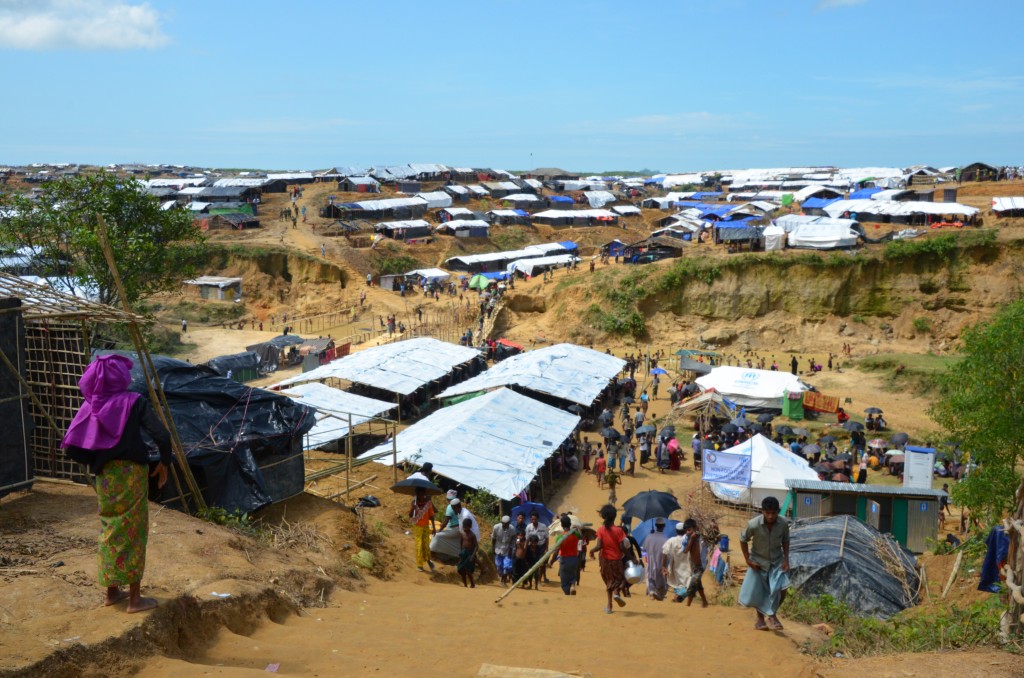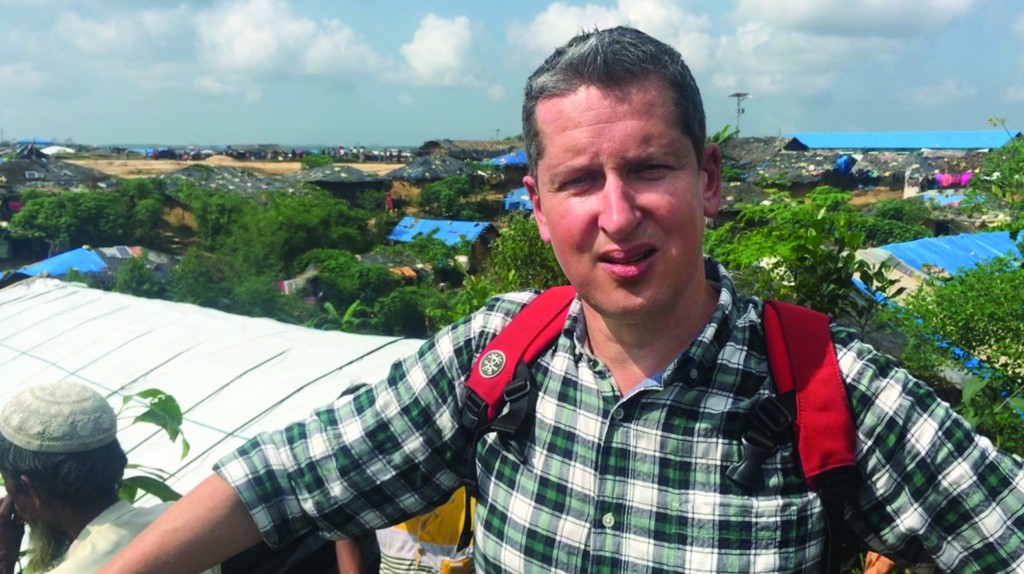Diary from a Disaster Zone – Rohingya Crisis
29 November, 2017
In September, Michael Peach spent 2 weeks in Bangladesh leading ADRA’s response to the Rohingya refugee crisis in Bangladesh. We’ve asked him to tell us what it was like.
While you were in Bangladesh, what did your typical day look like?
5:30am: Wake up and prepare for a 6am Skype call with ADRA’s Regional Emergency Coordinator covering resourcing, planning, staffing, engaging donors, logistics etc.
7:00am: A quick breakfast in the hotel.
7:30am: Either leaving for the Rohingya camps or meeting in my office for worship. Driving to the camps took up to 2.5 hours. It wasn’t far (75km) but the roads are small and extremely congested with the humanitarian effort.
9:00am: Meet with other NGOs or local government for up to three hours.
12:30pm: The rest of my day was filled with supporting my team, helping prepare the twice-weekly situation reports, reviewing proposals, budgets (lots of budget revisions), or responding to emails. We had regular debriefs whenever someone returned from the camps or a cluster meeting.
7:00pm: Dinner together before going our separate ways. Sadly, my nights would always push towards midnight, but I made a rule to try and get six hours sleep each night. There was just so much administration to look after.
What’s the hardest part?
The hardest part is the vicarious trauma that is experienced when you visit the camps and hear the refugees’ stories. It’s difficult to process the scale and tragedy of this civil conflict. More than 500,000 Rohingyas have crossed the border from Myanmar to Bangladesh, settling in camps ill-equipped to provide adequate food, shelter, water and sanitation to the rapidly expanding population. This forced displacement situation is extremely complex, many years in the making and unlikely to resolve itself anytime soon – this too is hard to deal with. I have responded to many natural disasters, and while they are traumatic, they generally track positively through the stabilising phase (food, water and shelter), to early recovery and longer-term rehabilitation and reconstruction. Human-made crises are sadly more complex, and prone to becoming ‘stuck’ in a protracted stabilising phase. With limited available land, access to capital and household security, the Rohingyas will struggle to make the transition to community empowerment and self-reliance.
In 20 years, what will you most remember about this trip?
What sticks in my mind is the scale of the situation: both the number of people and the size of the camps, particularly the mega Rohingya camp of Kutapalong. It literally takes your breath away. When you first arrive and stand on high ground, you get the opportunity to do a 360-degree scan and it has to be seen to be believed. As far as you can see in any direction is just so many people and the totally denuded forestry land jam-packed with colourful tarpaulins.

Can you share a story that resonated with you?
I met a Rohingya lady who told me she has not heard from her teenage son for a month. One night, she said, soldiers surrounded their village and commanded all first-born sons to be sent out and fight. She said her son went out with nothing but his bare hands and she hasn’t heard from him since. Later that night, the lady said her village was burnt to the ground. They all fled to the border and crossed to safety. She assumes her son is dead, but still carries hope because they didn’t hear any gunshots that night. As the father of a teenage son, this story really resonated with me.
Michael Peach is the ADRA South Pacific Emergency Coordinator. Published: 29 Nov 2017
 1800
242 372
1800
242 372